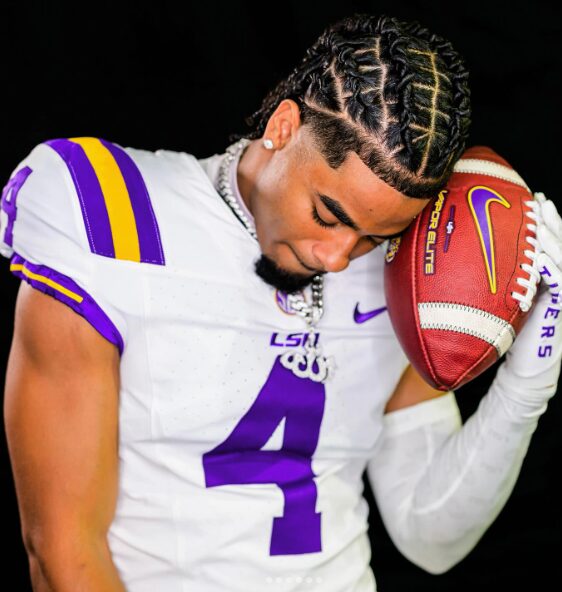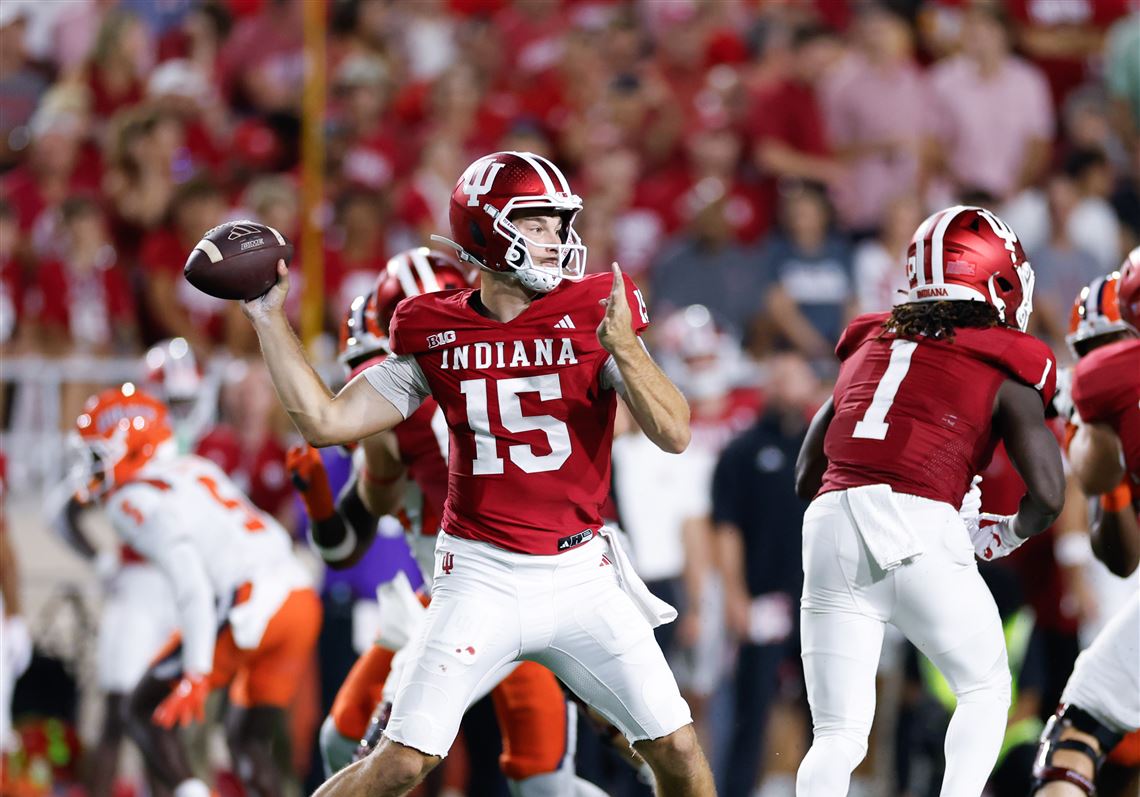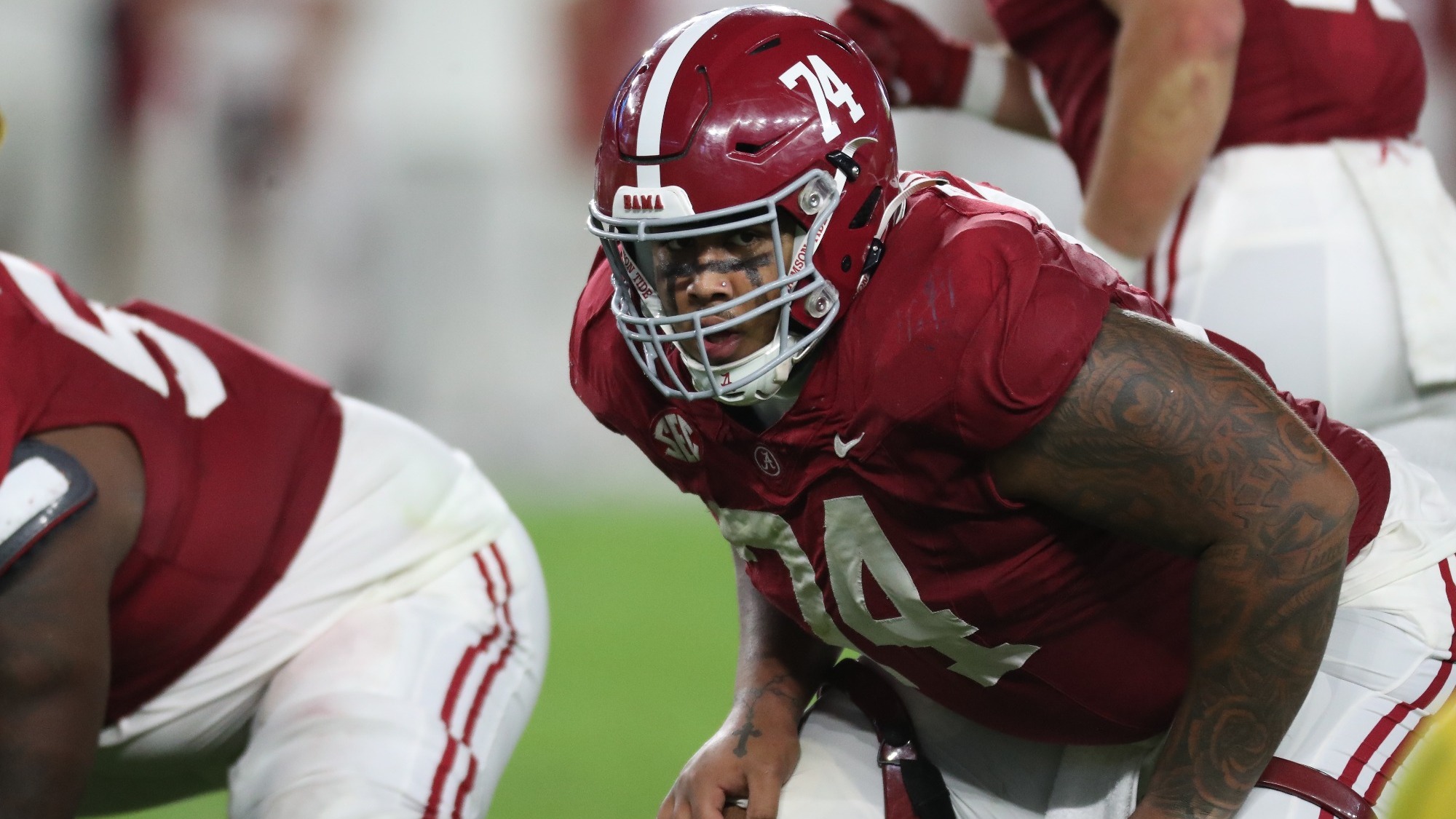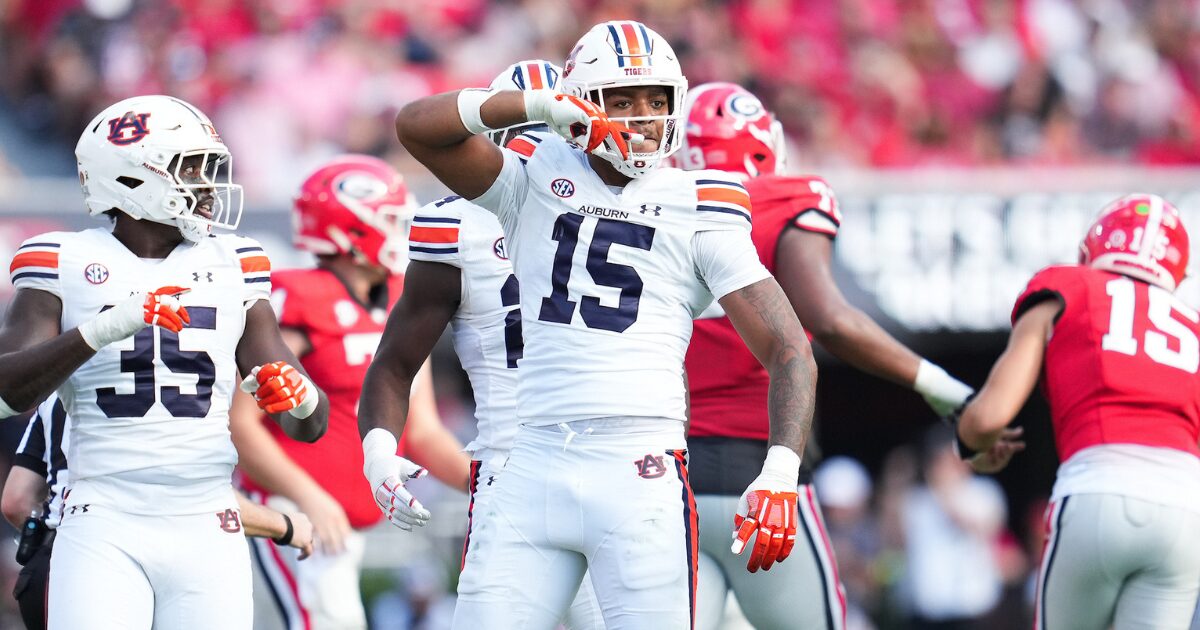By Charlie Campbell.
Send Charlie an e-mail here: [email protected]
Follow Charlie on Twitter @draftcampbell for updates.
This page was last updated March 6, 2015. Follow me @walterfootball for updates.
Position Review: Defensive Tackles
Defensive Tackle Class
Early-round talent: A
Mid-round: A-
Late-round: B
Overall grade: A-
2015 prospects vs 2014
Leonard Williams > Aaron Donald
Danny Shelton > Dominique Easley
Malcom Brown > Ra’Shede Hageman
Eddie Goldman > Timmy Jernigan
Arik Armstead > Ego Ferguson
Jordan Phillips > Jay Bromley
Mario Edwards Jr. > Will Sutton
Michael Bennett > Louis Nix
This marks the third straight season with a strong class of defensive tackles. All of the 2014 group above went in the first three rounds. Somehow though, the top eight players from 2015 are projected to go higher than their counterparts.
If you were to merge the two classes, you’d see a lot of equality. Williams and Shelton could go higher than Donald, but all three are similar level prospects. Brown, Goldman, Armstead and Phillips could all go higher or about the same level as the 2014 NFL Draft late first-rounder Easley. They should all go higher than Hageman and Jernigan did last year as second-rounders.
Edwards and Bennett could go early in the second round and are comparable prospects to Ferguson. Some other defensive tackles who could be early-round picks include Iowa’s Carl Davis, Auburn’s Gabe Wright, UCLA’s Ellis McCarthy, Clemson’s Grady Jarrett and Rice’s Christian Covington.
Safest Pick: Leonard Williams, USC

This was an easy decision as Williams is one of the top players in the 2015 NFL Draft. The 6-foot-5, 302-pounder is strong at the point off attack with the ability to shed blocks. He also is fast and explosive with the speed to dart by linemen. Williams can play end or tackle in a 4-3 defense and is a great fit as a 3-4 five-technique. While Williams may not become a defender who produces massive sack totals like J.J. Watt or Von Miller, Williams looks like a very safe pick to be a good NFL defensive lineman.
Previous Picks:
2014: Louis Nix
2013: Star Lotulelei
Biggest Bust Potential: Mario Edwards Jr., Florida State

There is no doubt that Edwards is a talented athlete. He has natural strength to go with speed. However, his college career saw him never produce up to his potential. Edwards’ motor, motivation and effort seemed to go dormant at times. He needs to develop more pass-rushing moves and only notched 6.5 sacks over the past two years. Edwards is a bit of a tweener defensive end and tackle, and that makes him a harder fit in the NFL. I don’t think Edwards is a future bust, but since I have to pick one, he looks like he has a few avenues to get there.
Previous Picks:
2014: Anthony Johnson
2013: Jesse Williams
Defensive Tackles Rankings by Attributes
Pass Rush:
NFL prototype: J.J. Watt, Texans
- Leonard Williams
- Michael Bennett
- Malcom Brown
- Danny Shelton
- Arik Armstead
- Eddie Goldman
- Mario Edwards Jr.
- Jordan Phillips
Recap: The NFL is always searching for interior linemen who can get after the quarterback. They are a hard commodity to find, and one can make a massive impact on a team’s ability to rush the passer. Tackles who can rush the quarterback set up a lot of sacks for edge rushers via disruption and double-teams. The fastest way to get to a quarterback is from the middle.
Williams didn’t produce the highest sack total of this group last year, but his pass-rush ability will translates the best to the NFL. With his speed, strength and moves, Williams is a threat to beat guards and tackles with his pass rush. Of the group above, he should be the most steady about putting pressure on the quarterback.
Bennett is a very good pass-rusher for an interior lineman. In 2014, he started slowly before getting red hot late in the year. He finished with seven sacks. Bennett is a speed rusher who can dart by guards and close on the quarterback in a hurry.
Brown has similar ability, but he might not be as fast. However, Brown is built with power to run over guards. He can bull rush his way to collapse the pocket.
Shelton isn’t just a heavy nose tackle; he had nine sacks last year. Some of those sacks came against weak competition that won’t be duplicated in the NFL. However, Shelton is still sufficiently powerful to toss linemen to the side and get after the quarterback. Shelton could produce quality sack numbers for a nose tackle and be an asset as a tackle who can get steady push down the middle to prevent quarterbacks from being able to step up into the pocket.
Armstead has pass-rush ability, but was held back by injuries to a degree last year. He has a lot of quickness and strength. Goldman and Phillips are heavy nose tackles who can collapse the pocket as well. They can contribute, but probably won’t be putting up significant sack numbers. Edwards had three sacks last year and didn’t rush the passer up to his potential. It will be interesting to see if that changes as a pro.
Run Defense:
NFL prototype: Haloti Ngata, Ravens
- Danny Shelton
- Eddie Goldman
- Jordan Phillips
- Leonard Williams
- Malcom Brown
- Arik Armstead
- Mario Edwards Jr.
- Michael Bennett
Recap: Shelton is an excellent run-defender. He is extremely strong at the point of attack and stuffs runs that come his direction. Shelton regularly ate up double-teams in 2014 to make tackles close to the line of scrimmage. He also can bust into the backfield to make tackles for a loss. Shelton is very good in short-yardage situations as well. He is just too big and powerful to single-block in the ground game. He can hold his ground against double-teams as well. In the NFL, Shelton is going to be an impact nose tackle on all three downs.
Goldman and Phillips are assets as run-defenders. They holds their ground when runs come straight at them and also have the ability to shed their blocks to chase down ball-carriers. Both players can burst into the backfield to blow up runs with disruption.
Williams is a good run-defender. He sometimes gets in trouble when he stands up too high and linemen get underneath his pads. Aside from that, Williams is stout and does a good job of causing disruption by firing into the backfield.
Brown is very similar in that he is at his best firing behind the line. He has issues if he plays too high, but when he keeps his pad level low, he is tough to move at the point of attack. Armstead and Edwards both have the ability to be good run-defenders, but weren’t constant in college. Each would flash some good plays and be quiet during others.
Bennett has added weight since the end of the year, which should help him in the NFL. In college, he had some quality games defending the run, but also could get pushed by downhill runs coming straight at him. Bennett will need to improve on that for the NFL.
Motor:
NFL prototype: J.J. Watt, Texans
- Danny Shelton
- Michael Bennett
- Malcom Brown
- Eddie Goldman
- Jordan Phillips
- Leonard Williams
- Arik Armstead
- Mario Edwards Jr.
Recap: The best motor this year is clearly Shelton’s. He goes 100 MPH all four quarters and never lets up. For such a big, heavy defender, Shelton has a tremendous motor and is very impressive. Bennett and Brown don’t typically quit, and each fights through the whistle. Even when Goldman is blocked, he is good about not giving up until the play is over.
A lot of heavier defensive linemen are prone to taking plays off because of not being in as good of shape, but Phillips gives good effort. He hustles and isn’t one to quit.
Williams has a good motor at times, and then he has stretches where he seems like he has taken his foot off the pedal (the 2014 Notre Dame game for example).
Armstead doesn’t have a bad motor, but he doesn’t blow you away either. Edwards looks like he takes some plays off, especially during the 2013 season. Edwards can fall quiet for stretches.
Speed:
NFL prototype: Gerald McCoy, Buccaneers
- Leonard Williams
- Arik Armstead
- Michael Bennett
- Mario Edwards Jr.
- Malcom Brown
- Danny Shelton
- Eddie Goldman
- Jordan Phillips
Recap: All of these tackles have speed, which is pretty impressive. There isn’t a whole lot that separates the top four especially. Williams is the fastest with his get off and ability to close on the quarterback. He can beat tackles with speed rushes and that sets him apart. Armstead is a little bit behind Williams, but Armstead is also a fast defender at the point of attack.
Bennett looks like a true three-technique. He is fast to fire his gap and get penetration past guards. Off the snap, Bennett is very quick, and speed is the trademark of his game.
Edwards is similar. He played heavier at Florida State and was lighter at the Combine. As a pro, Edwards could function well as a defensive end on running downs and a speedy defensive tackle in passing situations for a 4-3 defense. He can provide a speed mismatch against interior blockers.
Brown has serious quickness to his game, and nobody would say he’s a plodder. He can fire by a guard and get to the quarterback with his speed.
The true nose tackles of Shelton, Goldman and Phillips all have a burst, but aren’t as fast as the other tackles. Size and power are their strengths to go with their burst. These three are virtually tied. Even though Phillips is ranked last, speed isn’t a weakness of his game.
Strength:
NFL prototype: Ndamukong Suh, Lions
- Danny Shelton
- Jordan Phillips
- Eddie Goldman
- Malcom Brown
- Leonard Williams
- Arik Armstead
- Michael Bennett
- Mario Edwards Jr.
Recap: Shelton is definitely the strongest of the defenders. He can hold his ground against double-teams and has the strength to toss blockers to the side. It appears he throws offensive linemen around for fun. Against one-on-ones, Shelton can be impossible to hold up.
Phillips and Goldman are very strong as well. Offensive linemen can’t push them around, and they can bully blockers into the backfield. Both have shown the ability to beat some double-teams as well.
Brown, Williams and Armstead are all strong for their size. They can play with good leverage, and when they do, they are not going to be moved. All three players get in trouble when they stand up too high. However, they have the upper body strength to shed blocks at the point of attack.
Bennett (6-2, 293) flashes some strength at times, but doesn’t show it enough for it to be considered an asset. He is a speed defender. Edwards was stronger during the fall before losing weight for the Combine, but he won’t be a pure power player in the NFL.
3-4 Defensive End:
NFL prototype: J.J. Watt, Texans
- Leonard Williams
- Arik Armstead
- Jordan Phillips
- Eddie Goldman
- Mario Edwards Jr.
- Malcom Brown
- Danny Shelton
- Michael Bennett
Recap: This group has a couple of natural 3-4 ends. Williams would be perfect to play a five-technique role like J.J. Watt does for Houston. Williams won’t be as good as Watt, but Williams could be one of the better five-techniques in the NFL if he’s drafted into a 3-4. Williams has length and strength to set the edge with the speed to add to the pass rush going against tackles or guards. Williams is a great fit as a 3-4 defensive end.
Armstead (6-7, 292) is similar. He is tall, thick and long to be to set the edge and free up the outside linebackers. Armstead also could use his quickness to add pass rush against guards and right tackles. Armstead would be a nice fit in a 3-4 scheme, and he could be more effective in a 3-4 than he would be in a 4-3.
While Phillips is more of a nose tackle, the 6-foot-5, 329-pounder has the length, quickness and athleticism to move to the edge. The same goes for Goldman (6-4, 336). With a heavy nose tackle in the middle they could really eat up blockers to free up the linebackers.
Brown (6-2, 319), Shelton (6-2, 339) and Bennett are all poor fits as 3-4 ends. They don’t have the length that 3-4 teams look for in going against offensive tackles.
Three-Technique:
NFL prototype: Geno Atkins, Bengals
- Michael Bennett
- Malcom Brown
- Leonard Williams
- Mario Edwards Jr.
- Arik Armstead
- Eddie Goldman
- Jordan Phillips
- Danny Shelton
Recap: Good three-techniques are generally hard to find, but this draft class has a few of them. The first four above have all shown the ability to be skilled three-techniques. Bennett’s speed, pass-rush ability and get off give him the top spot. He is a natural three-technique who would be a great fit in a Tampa 2.
Brown is just a little below Bennett. In 2014, Brown flashed as a three-technique given the way he fired into the gap off the guard’s outside shoulder. The speedy tackle was disruptive, which is what a three-technique needs to do more than anything else. Brown is a little heavier than most three-techniques, but in some ways that adds to his intrigue as a power three-technique and run-defender.
Williams and Edwards are both fits as three-techniques with their speed and athleticism. Both prospects have a lot of upside. At USC, Williams played the three-technique as a freshman for Tampa 2-guru Monte Kiffin. Williams had eight sacks that season, so obviously he can get the job done in that role.
Armstead has some quickness, but is a little tall and long for that technique. Goldman and Phillips could be more of power three-techniques. They are more nose tackles to play next to a true three-technique, but they could play the position if needed. Shelton isn’t a three-technique. He would be a nose tackle in a 3-4 or 4-3, but he would eat up a guard and center to give the three-technique a one-on-one matchup.
3-4 Nose Tackle:
NFL prototype: Vince Wilfork, Patriots
- Danny Shelton
- Jordan Phillips
- Eddie Goldman
- Malcom Brown
- Leonard Williams
- Mario Edwards Jr.
- Arik Armstead
- Michael Bennett
Recap: A good nose tackle for a 3-4 defense is a tough commodity to find. Someone like Vince Wilfork sets the tone for the pass rush and the run defense by blasting the center into the backfield. An effective zero-technique stuffs the run and occupies interior blockers to open up lanes for blitzes up the middle.
Shelton played nose tackle for years at Washington and is very skilled at it. A few seasons from now, he could easily be the player who replaces Wilfork as the prototype. Shelton is a natural with his power, burst and body type. He should be a perfect fit manning the zero-technique in a 3-4 defense.
Phillips also has experience playing nose tackle in a 3-4. He can line up over centers and overwhelm them. Phillips is just about on a par with Shelton, but Shelton is more proven with more career production, thus he’s rated first. In a few years though, Phillips could be a Pro Bowl nose tackle with his combination of power, speed and force.
As stated above, Goldman would be a good fit in a 3-4 and could be a powerful force as a zero-technique. Brown has enough beef to get consideration as a nose tackle.
Williams, Edwards, Armstead and Bennett would all line up as an end in a 3-4 if they placed in that defense. None of them have the build to be a nose tackle in a 3-4.
NFL Picks - Jan. 12
2026 NFL Mock Draft - Jan. 7
NFL Power Rankings - Jan. 5
Fantasy Football Rankings - Sept. 1




